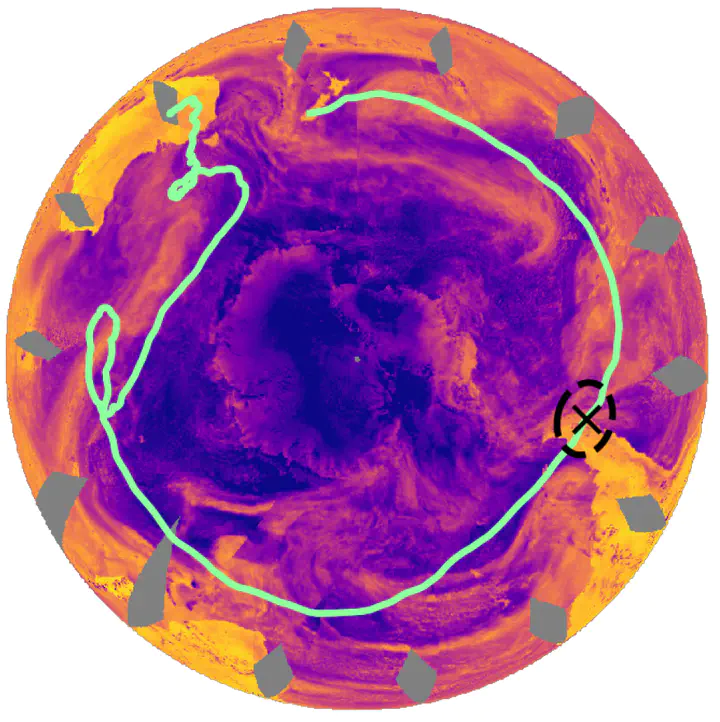 Image credit: Fig 2
Image credit: Fig 2Abstract
Microwave telescopes require an ever-increasing control of experimental systematics in their quest to measure the Cosmic Microwave Background (CMB) to exquisite levels of precision. One important systematic for ground and balloon-borne experiments is ground pickup, where beam sidelobes detect the thermal emission of the much warmer ground while the main beam is scanning the sky. This generates scan-synchronous noise in experiment timestreams, which is difficult to filter out without also deleting some of the signal from the sky. Therefore, efficient modelling of pickup can help guide the design of experiments and of analysis pipelines. In this work, we present an extension to the BEAMCONV algorithm that enables us to generate time-ordered data (TOD) from beam-convolved sky and ground maps simultaneously. We simulate ground pickup for both a ground-based experiment and a telescope attached to a stratospheric balloon. Ground templates for the balloon experiment are obtained by re-projecting satellite maps of the Earth’s microwave emission.